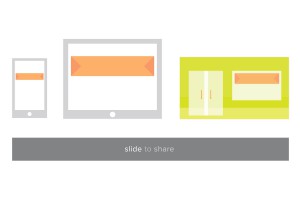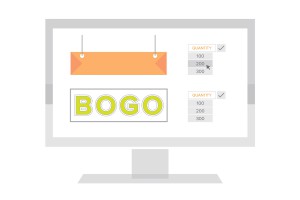You’ve worked closely with your team to prepare a great marketing campaign and you’re ready to launch. Your messaging is on target, and you have great graphics designed to really get you noticed. Just one question: what will your campaign look like when it reaches your brick and mortar locations? Will your in-store marketing have the same impact or better than your media campaign?
Are you sure about that?
It’s a simple question with a complicated answer. If you have hundreds or thousands of locations with varied store layouts, and customer demographics, how can you be sure that your campaign will look as it should in every space? Poor visual marketing can ruin the impact of a great media campaign. So answering this question is critical to your marketing success.
Why IS it so hard to get in-store marketing right?
First let’s break down the problem; what makes it so hard to manage brick and mortar visual marketing? We see three main issues based on our experience with other retail marketers:

2. The Printing Problem: even if you did know the specific layout and signage needs for every store, printing unique signage kits for every variation is too expensive and inefficient. Every job sent to the printer has an overhead expense on top of the printing costs, so it’s important to create as few print orders as possible while still accommodating the varied signage needs for all your different locations. So how do you walk the fine balance between number of print jobs, and customized sign kits?
3. The Compliance Problem: ok, let’s say you know your stores like the back of your hand, and you’re a mathematical genius who can calculate the most efficient set of print orders. So you send your kits out into the world, and send a global announcement to store managers that kits are on the way. How do think that would play out? Did your signs get to the stores? Did your local managers put up the signs correctly? Is your campaign intact? Can local managers reach out if they need guidance, or replacements? When should they take the signs down?
This challenging trifecta is exactly why it is so difficult, and resource-intensive to manage your in-store visual marketing. Sure, you can throw people and hours at most of these problems, but that’s going to drive up the cost of your marketing campaign, which reduces the overall campaign ROI. What’s a marketer to do?

Here’s what doesn’t work: having a small team of people call every store to get updated layout information. People are valuable, and their time is expensive. During each phone call, you’ve tied up two people: the store manager (or whoever has the store data), and the marketing staffer making the call. If each call takes five minutes and you have 300 stores, that’s 1,500 minutes gone. But two people are on each call, so it’s really 3,000 minutes, or 50 hours for every census.
And what happens when a store layout changes? Your team likely has no idea, so they can’t proactively update the data, which means your data is now outdated.
Outgoing live surveys really aren’t the solution.
But, what if store managers could update their store’s data by themselves – in real time – whenever the store layout changes? Let’s do the math: a few minutes to log in and update the data, same as a phone call, but no time required from the corporate marketing side. That cuts your resource needs in half – from 50 hours to 25 – AND your data is far more likely to be up to date.
By giving direct access to the people with the latest data, you can significantly improve your ability to track store layouts and demographics. And that gives you a much better starting point for calculating brick and mortar signage needs.
This is the conclusion we found through working with some of the largest brick and mortar retailers in the world. We think it’s a great idea, and we built software to prove it.

Crosscap has been thinking about these problems for over a decade, and this is just part of our Visual Marketing Automation solution. Stay tuned for next week’s post, where we’ll talk about how to solve The Printing Problem (or how to find the right balance between custom sign kits, and lower print costs). Here’s a hint: Let Crosscap do the math for you. See you then!
To request a live demo of our Visual Marketing Automation tool please click here.

